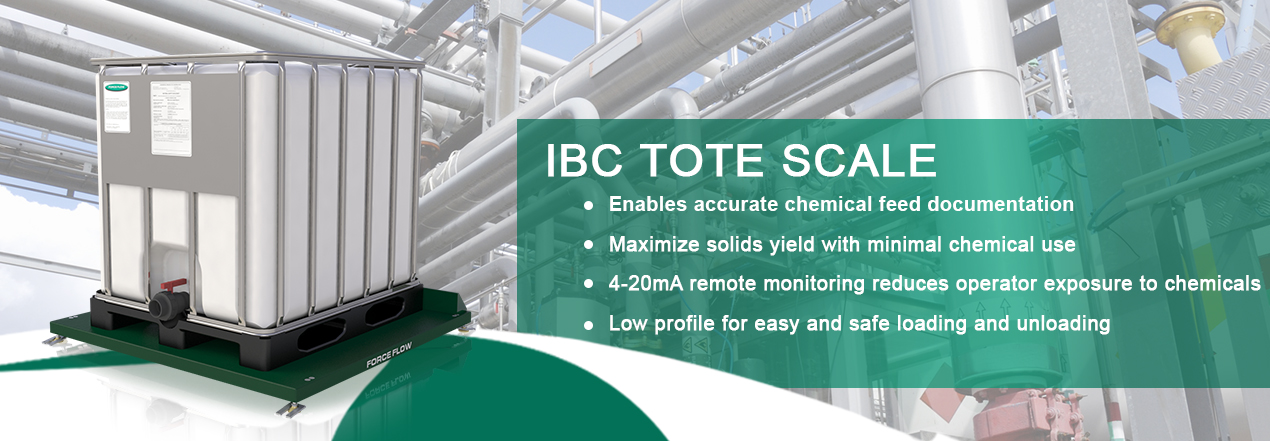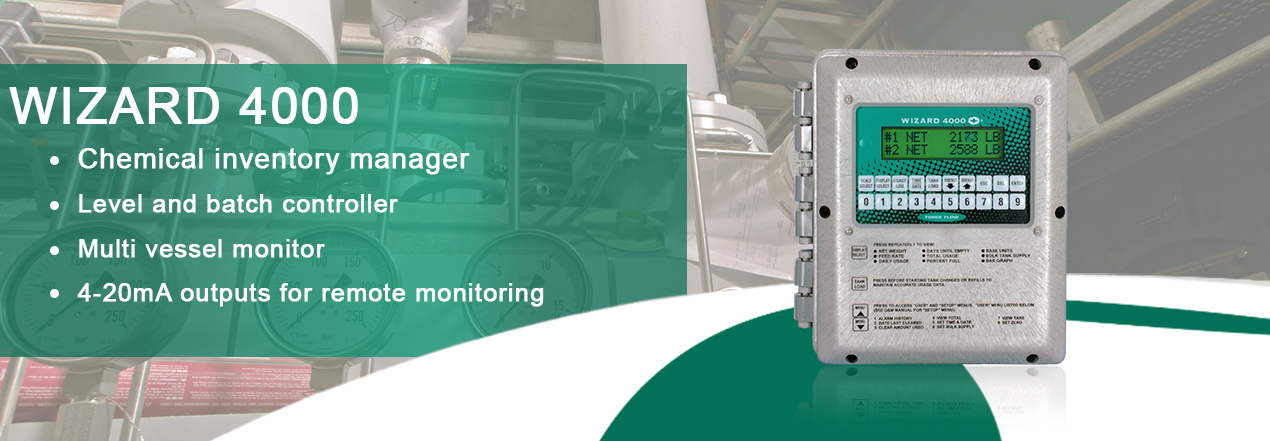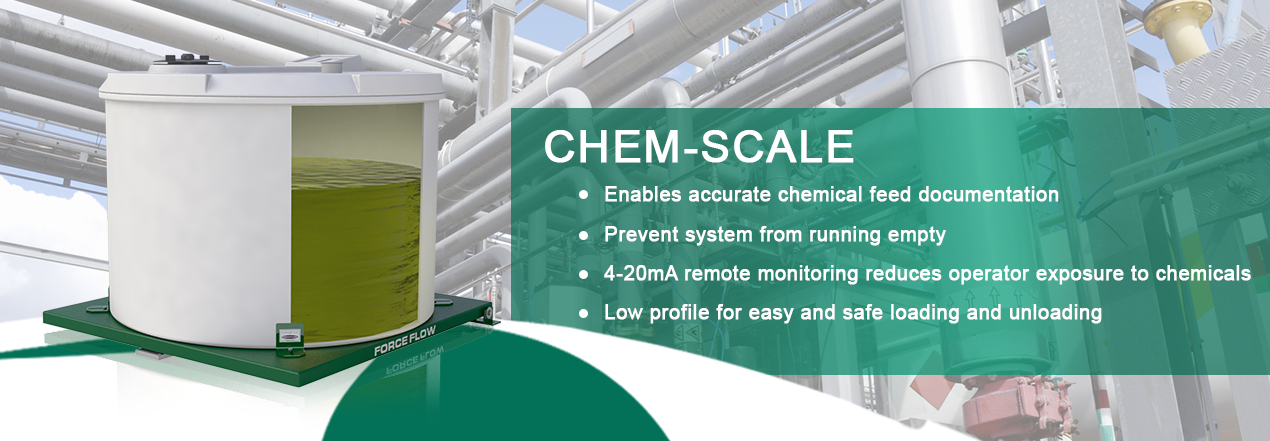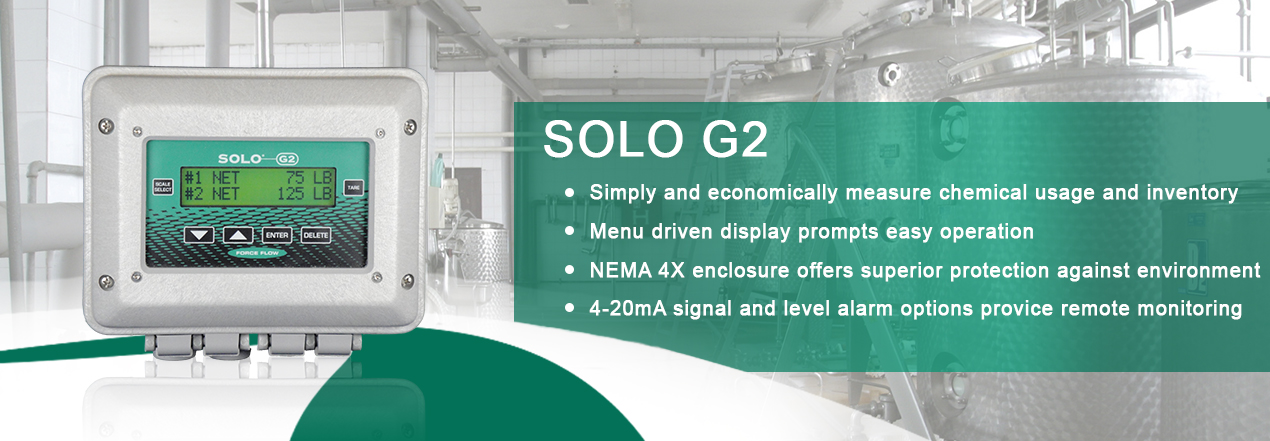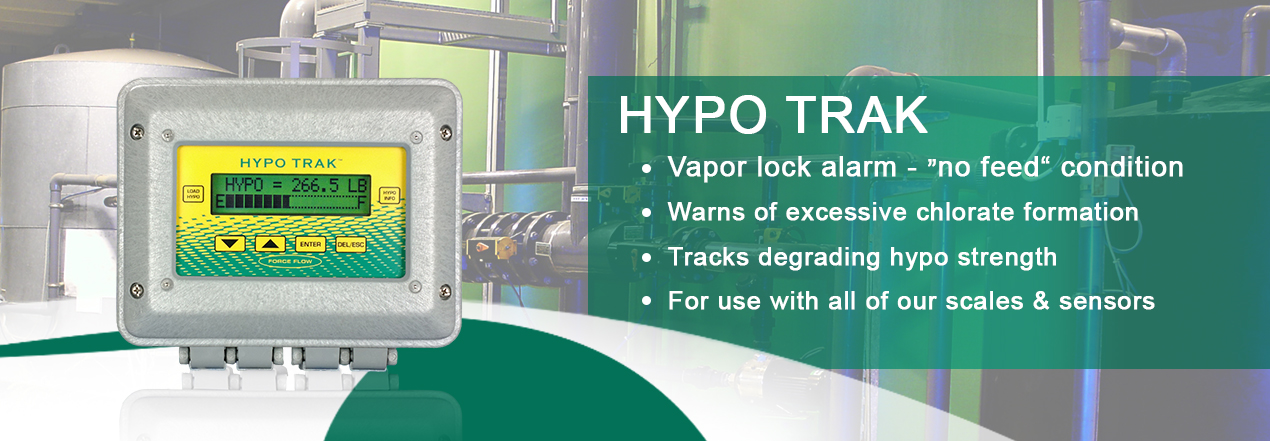Company History
The Origin Of Chlorine And Chemical Feed Scales
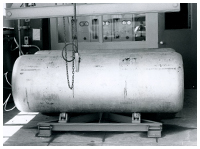 As with many small companies, Force Flow was established out of need for a product that could better serve the specific needs of a particular market and application.
As with many small companies, Force Flow was established out of need for a product that could better serve the specific needs of a particular market and application.
Up until the mid 1960's, the municipal water and wastewater market occasionally used mechanical platform scales to monitor the contents of chlorine ton containers. These "pit mounted" industrial platform scales were not easy to install, required regular maintenance and calibration, did not facilitate easy handling of the tanks, and did not have alarm or remote monitoring capability. On top all this, they were extremely expensive!
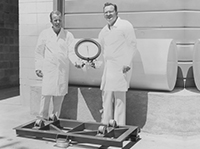 In 1967, Dave Nelson was a young instrument salesman and recognized that there was a need for a better product. His past experience as a scale mechanic and a sense for creativity gave him the ability to develop the rugged and reliable hydraulic CHLOR-SCALE® that has become the industry standard worldwide. Dave's leadership and innovation pioneered the use of level alarms and remote mounted instrumentation to reduce operator exposure to chlorine, integrated roller trunnions for ease of valve positioning, and the simple 3-point pivoted platform design to make installation and operation a breeze. These basic features of Dave's original CHLOR-SCALE design have been imitated, but never equaled, in many countries around the world including China, England, Germany, India, Canada and of course the USA. As the saying goes, "Imitation is the best form of flattery!"
In 1967, Dave Nelson was a young instrument salesman and recognized that there was a need for a better product. His past experience as a scale mechanic and a sense for creativity gave him the ability to develop the rugged and reliable hydraulic CHLOR-SCALE® that has become the industry standard worldwide. Dave's leadership and innovation pioneered the use of level alarms and remote mounted instrumentation to reduce operator exposure to chlorine, integrated roller trunnions for ease of valve positioning, and the simple 3-point pivoted platform design to make installation and operation a breeze. These basic features of Dave's original CHLOR-SCALE design have been imitated, but never equaled, in many countries around the world including China, England, Germany, India, Canada and of course the USA. As the saying goes, "Imitation is the best form of flattery!"
Force Flow has continued to take the lead as the innovator in chemical monitoring with products like our WIZARD 4000® Chemical Inventory Management System and our CHLOR-SCALE 150® for cylinders. Perhaps as important as being a technology innovator is our commitment to customer service through our exclusive 5-YEAR WARRANTY and PERFORMANCE GUARANTEE™.
In 1996, Dave's son Mark took over the operation of the company after 12 years employment and a lifetime of literally "growing up" with scales. Despite Dave's Passing in January 2023, his legacy lives on. With an experienced and energetic management team in place, Force Flow is excited about the technological innovations that will continue to shape our industry in the 21st century.
Technologies
FIVE INSTRUMENT CATEGORIES TO CHOOSE FROM
Using a Force Flow scale means choice!
At Force Flow, we do not take a "One size fits all" approach to your chemical monitoring needs. We have developed many different types of instrument systems so you can match your exact requirements. With multiple choices available in each of our five instrument categories, you can rest assured that we have the specific equipment you need. In addition, we specialize in custom hardware and software for the most unusual instrumentation applications!
When specifying a scale for your chemical inventory needs, there are three technologies that we offer:
 |
HYDRAULIC SCALES: The hydraulic load cell is comprised of a piston bonded to a rolling diaphragm floating over a cylinder of hydraulic fluid. The piston receives the load and converts that force (or weight) into a proportional pressure signal which is sent via hydraulic tubing to a bourdon tube type of dial indicator. These scales are ideal for applications which require:
|
  |
ELECTRONIC SCALES: The electronic load cell scale is comprised of a shear beam strain gauge load cell mounted in a hardware assembly. The shear beam load cell accepts load at one end of the beam and thus deflects (or strains) the Wheatstone bridge within the load cell. This deflection causes a change in microvoltage proportional to the applied load which is read out on our multi-channel digital weight indicators. Electronic scales are ideal for applications which require:
|
  |
CROSS TECHNOLOGY SCALES: The best of two worlds have merged through CROSS TECHNOLOGY to create durable and economical digital weight instrumentation which requires no line voltage. CROSS TECHNOLOGY blends our rugged and reliable hydraulic load cell with an easy to read digital indicator or 4-20 ma transmitter. The SOLO XT or SATELLITE transmitter converts the hydraulic pressure signal from the load cell to an electronic signal that can be either read on a digital display and/or transmitted remotely. Cross technology scales are ideal for applications which require:
|
Why Monitor Chemicals?
Using a Force Flow Scale means SAFETY!
|
STOP WASTING EXPENSIVE CHEMICALS:
|
| SATISFY GOVERNMENT RECORD KEEPING REQUIREMENTS!! | |
| Many Government Regulators, Industry Standards Groups and Trade Associations affiliated with the water and wastewater industry recommend or require using weighing scales to document chemical usage and inventory. Following is a small sampling of these regulatory bodies and the recommendations and requirements that are contained in their codes. As you can see, good engineering and safety practices include the use of a chemical weighing system for all chemicals used in the water and wastewater industry. |
| I. | South Carolina Department of Health and Environmental Control's (DHEC) State Primary Drinking Water Regulations (SPDWR) September 2000 edition: |
Section R.61-58.7,B(6) reads as follows "The operator shall measure the amounts of all chemicals used each day and calculate the dosages. The operator shall maintain a written record of all measurements and dosage calculations. The records shall be kept for a minimum of 3 years. "Additionally, Section R.61-58.7, B(9)j reads "Scales for weighing cylinders shall be calibrated yearly and properly maintained." |
| II. | Environmental Protection Agency's Risk Management Program (RMP) |
Section 112 (r), 40 C.F.R. Part 68: "All users storing in excess of 2500 lbs of Chlorine, 5000 lbs of Sulphur Dioxide and 10,000 lbs of Anhydrous Ammonia shall be required to file a Risk Management Program with the EPA." The best method of determining whether these thresholds have been exceeded is via a weighing scale. |
| III. | Great Lakes Upper Mississippi River Board of State Public Health & Environmental Managers |
Recommended Standards For Water Works 1997, ie "The 10 states standards": Part 5 Chemical Application, Section 5.1.2 (e) reads: "Provisions shall be made for measuring the quantities of chemicals used." Additionally, Section 5.1.2 (f) reads "Weighing scales: (1) shall be provided for weighing cylinders at all plants utilizing chlorine gas (2) may be required for fluoride solution feed (3) should be provided for volumetric dry chemical feeders, and (4) shall be capable of providing reasonable precision in relation to average daily dose." |
| IV. | Great Lakes Upper Mississippi River Board of State Public Health & Environmental Managers |
Recommended Standards For Wastewater Facilities 1997, i.e. "The 10 states standards": Chapter 100 Disinfection, Section 102.41 reads: "Scales: Scales for weighing cylinders and containers shall be provided at all plants using chlorine gas. At large plants, scales of the indicating and recording type are recommended. At least a platform scale shall be provided. The scales shall be of corrosion resistant material." |
| V. | AWWA Manual M4: Water Fluoridation Principles and Practices Third edition: |
Page 26 reads "In any fluoridation installation, except one based on a sodium fluoride saturator, scales are necessary for weighing the quantity of dry material to be used in preparing the solution, the quantity of solution fed, or the quantity of fluoride compound or hydrofluosilicic acid delivered by the appropriate feeder." In addition, Page 30 reads "Alarms: To prevent underfeeding or loss of feed, alarm systems can be included in either solution or dry feed systems. The alarm alerts the operator when the level of solution in the day tank is low or when it is time to add chemical." |
| VI. | Compressed Gas Association's CGA G-2 Manual: |
Page 36 section 8.9.1 reads "Determining when cylinders are empty-Weighing. The best way to determine if an ammonia cylinder is empty is to weigh it, without cap, and compare the weight with the tare weight stamped on the cylinder." |
| VII. | The Chlorine Institutes Pamphlet 1 "The Chlorine Manual": |
Page 10 Section 2.8.4 reads "Weighing-Because chlorine is shipped as a compressed liquefied gas, the pressure in a container depends on the temperature of the chlorine. The pressure is not related to the amount of chlorine in the container. Container contents can be determined accurately only by weighing." |
Force Flow Company Info
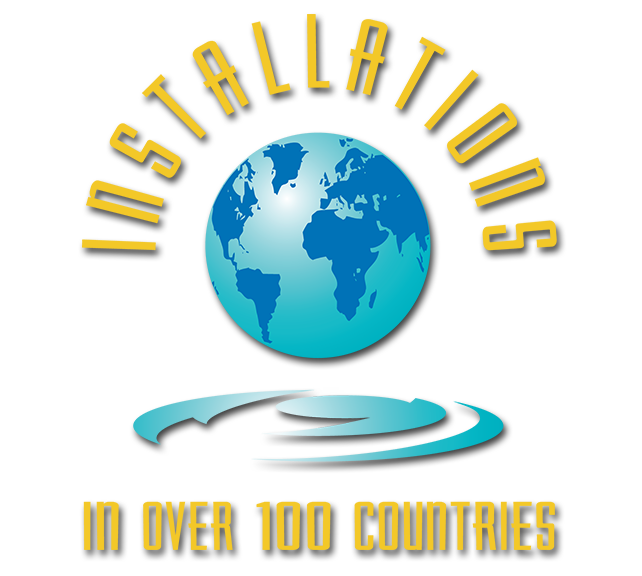 |
INSTALLATIONS IN MORE THAN 100 COUNTRIES Using a Force Flow Scale means EXPERIENCE! Installations in over 100 countries including: |
|
|
|
|
|
- Over 40 years in the water and wastewater industry
- Factory trained personnel on six continents
5-YEAR WARRANTY & PERFORMANCE GUARANTEE
Using a Force Flow Chemical Monitoring Scale means you have SUPPORT!
|
